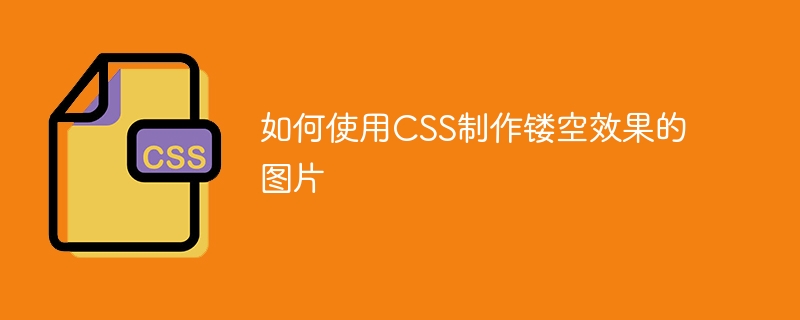

How to use CSS to create images with hollow effects
In web design, how to create unique and attractive effects is a problem that is constantly being explored. Among them, the hollow effect is one of the common and commonly used techniques. By using CSS, we can add hollow effects to images, thereby improving the beauty and appeal of the page.
Below, we will introduce in detail how to use CSS to create images with hollow effects and provide specific code examples. First, we need to prepare an image as our example image.
The principle of implementing the hollow effect is to overlay a layer with the same size and position on the image, and then pass Transparency control allows the underlying layer to be displayed, thereby achieving a hollowing out effect.
HTML part:
CSS part - style.css:
.container { display: flex; justify-content: center; align-items: center; height: 100vh; } .image-container { position: relative; } .overlay { position: absolute; top: 0; left: 0; width: 100%; height: 100%; background-color: black; opacity: 0.5; /* 可根据需要调整透明度 */ pointer-events: none; /* 使覆盖层不响应用户交互 */ }
In the above code example, We created a div container as the layout container for the page. Within this container, an image-container div is created to contain the image and overlay. The overlay uses position:absolute to position it above the image and set the width and height to 100% so that it has the same size and position as the image.
In the overlay style, we set the background color to black and control the transparency by adjusting the opacity attribute so that the image below can be displayed through the overlay. Additionally, we used the pointer-events attribute to set the overlay to be unresponsive to user interaction.
The above code examples are just basic hollow effect examples. We can further optimize and customize them according to our own needs and aesthetic requirements. .
You can achieve different hollowing out effects by adjusting the transparency, background color, shape and border of the overlay. You can also use CSS3 transition effects and animation effects to add some dynamic effects to the hollow images to make the page more vivid and interesting.
Summary:
Using CSS to create images with hollow effects is a relatively simple and effective method that can be used to add some visual highlights to static images. By mastering the basic principles and using the correct code, we can flexibly create hollow effect pictures of various styles and shapes. I hope the above article can be helpful and inspiring to everyone!
The above is the detailed content of How to use CSS to create a hollow effect image. For more information, please follow other related articles on the PHP Chinese website!